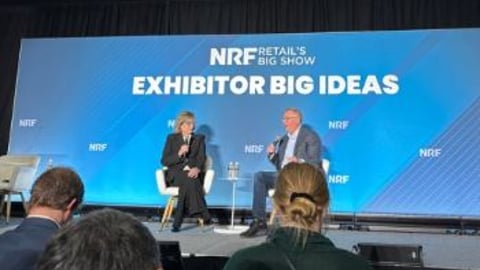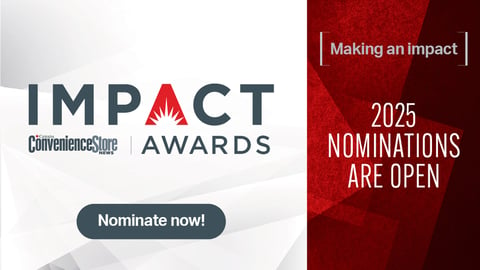A new generation of workplace apps aim to improve culture and employee retention
There are about 2.7 billion front-line employees worldwide—more than double the number of desk-based workers, according to Gartner. Many report feeling disconnected or unable to get up to speed with important work-related information, so it’s no surprise that keeping engaged and productive employees is an ongoing challenge.
C-store and gas retailers often struggle when hiring, onboarding, scheduling and managing deskless employees. One potential solution? Swapping whiteboards, timecards or sticky notes for an agile mobile app that simplifies everything from training to time tracking. Here’s why your organization should consider diving in.
A wide range of options
When workplace apps first appeared on the market, most were job- or industry-specific, but today’s comprehensive options can do everything from enhancing collaboration and communication to accessing training materials and rewarding staff for reaching milestones.
Some scheduling and work management apps such as Clockify, ClockShark and When I Work also include analytics, estimation, billing or payroll tools. Learning and development mobile apps including eduMe and Kallidus Learn LMS deliver bite-sized training programs that deskless workers can fit into their workday.
C-stores and gas retailers can also take advantage of comprehensive tools like WorkJam and employee communications apps like Blink, LumApps and Beekeeper to inform workers about company information, training opportunities and social events. Many tools also promote employee feedback, offering functions including chat, comments, and polls—all of which can boost engagement, help workers connect to each other and improve the employee experience.
Reach workers where they are
Success starts with authentic communication that simplifies how teams connect with each other and with the organization, says Blink CEO Sean Nolan.
“Apps like ours enable companies to have more effective communication internally, but also give people more convenient access to things they really care about, like shift swaps and rosters, and their benefits by putting those into a mobile form factor that’s similar to existing apps they’d have on their smartphone,” he says.
When you can foster a sense of belonging while encouraging feedback, it’s much easier to create alignment, understand potential problems, and fix them, adds Nolan.
“Our app allows leaders to communicate through stories like Instagram or TikTok. They can record short videos, share images and talk to their people in a human, impactful way,” says Nolan.
“We have leaders in the retail space sharing examples of what a great display looks like, or an effort someone’s put in to help a customer, or a new promotion they’re running. And if they’re making a decision about a new investment into new technology, or they’ve made an acquisition, they can talk to their people directly and get immediate comments and feedback. It creates a sense of belonging and togetherness that workers really appreciate, and that drives up employee satisfaction and retention.”
Customize tools for your needs
WorkJam, a platform used by tens of thousands of c-store workers across Canada at companies including Shell, Circle K and Couche-Tard, has four modules that c-store owners and gas retailers can tap into to streamline task management, store audits, scheduling and learning, says global chief marketing officer Louise Clements.
“Our mission is to revolutionize the front-line workplace, so you end up with a happy, engaged workforce—which leads to higher productivity,”
“Convenience stores have a ton of complexity—they’re gas stations and QSRs, they’re selling liquor and tobacco—so, you’ve got all kinds of different frontline workers: regional managers, store managers, field managers, warehouse and distribution, and headquarters,” says Clements. “Platforms like WorkJam allow you to have a much better way of engaging with those teams and understanding how they’re feeling.”
Preventing pain points
Adding to high staff turnover are the soaring costs to attract and train talent, plus ever-changing regulations around food safety, tobacco and alcohol. A digital tool can help solve challenging issues, says Clements.
“You need to know that your staff are qualified so you can task them correctly and know that they and your customers are going to be safe, and that they can deliver a customer experience that works for your brand,” she explains.
“If you’re using a clipboard to communicate a task, how does that frontline worker ask a question? We have a knowledge centre built into our platform; you can ask a question, get immediate answers, and only receive communications that are relevant to you. I don’t have to search through an intranet or leave a customer if I’m at the cash desk or stocking a shelf or serving hot food—all that information is available to me, so I feel engaged and I know what my tasks are.”
Nolan says onboarding is a key use case for digital tools, because mobile technology enables leaders to standardize and automate processes, so everyone gets the same high-quality experience. You can also build in feedback loops.
“With a lot of retailers, it’s not uncommon for 40% of staff to leave in the first three months. By figuring out why earlier, you can address that,” he explains.
“As part of our automated onboarding, you can send out a survey at day seven, day 30, and day 45, and if someone says, ‘I’m unhappy because I’m not getting enough hours’, the manager can get that data and say, ‘I need to re-look at my rostering patterns, or talk to the individual and see what I can do to better match their needs’.”
To streamline scheduling, look for a digital platform that integrates with your organization’s workforce management tools and payroll system, suggests Clements. With WorkJam, for example, employees can see open shifts and sign up for those they’re qualified for.
“If someone has training for food safety but is also able to be there for a fuel delivery, they can look at their app and pick up that extra shift,” she explains.
“You’re now giving managers back their time so they can do other important things, and empowering employees who then may be less likely to leave the job.”
Developing your team’s potential
Clements believes the c-store industry should think of training as ‘everboarding’—continuous coaching and learning through gamified digital tools.
“The best way people learn is in the flow of work, and our customers are leveraging the platform to train somebody while they’re doing a task,” she says.
“For example, I’ll give Nicole a badge because she finished three trainings this week, and now she’s eligible for a higher salary. We see Circle K, Couche-Tard and Shell sprinkling in their corporate culture into gamified training, so employees feel connected as frontline workers.”
Building company culture will drive engagement—especially for night workers who may never see their manager.
“They never have to be disconnected from the culture because they’re hearing the daily standup from the regional field manager, finding out about the latest marketing program and sharing information back. This is powerful in terms of reducing your turnover,” she says.
Choosing the right solution
Clements suggests c-store owners and gas retailers start by finding a provider that offers great communication tools.
“Look for a solution that allows targeted two-way communication because you don’t want somebody who’s on cash to be wasting their time on new compliance regulations for how to fry the chicken,” she explains. “Then, move to a tool that digitizes tasks. Make sure you pick a solution that has everything baked in.”
Reaching today’s employees through their smartphones instead of the company intranet makes sense, adds Nolan.
“A lot of workplace software is still pretty clunky—you’ve got to reset usernames and passwords and go to a computer. We avoid those things,” he says. “Choosing where to start is half the battle, whether that’s putting in a new payroll and benefits provider or a communication and engagement app. We find that starting with communications, especially if you’re changing other things, enables you to have a conversation: ‘We’re bringing this new rostering system; this is what it means for you.’ Making that a great experience for everyone is crucial to successful change management. The communication bit is the most important part.”
The future is now
Nolan calls Blink a ‘super app’ that gives frontline workers one entry point to retrieve everything they need to do their jobs better: important communications, productivity tools, access to scheduling, benefits information and more—all while boosting engagement.
“Companies win in the market through having the best people but also motivating those people and making them feel like they’re part of something bigger by creating that connection to the company’s mission, vision, and values, so that when they’re fulfilling their roles, they do that in a way that’s aligned with the organizational values they’ve bought into,” he says.
“We see a connection between employee experience and customer experience. Companies that have a great employee experience with motivated, happy workers are the ones that also have a great customer experience. The ones we see leaning in and making investments in this area are also the ones that are winning market share.”
Originally published in the May/June 2025 issue of Convenience Store News Canada.









